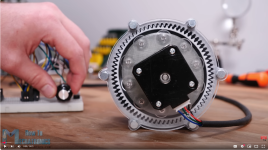yes, and even 150w of assist is really quite a lot on a road bike, that's the difference between a spirited amateur and a pro in a lot of cases. you won't go "fast" up a hill, but you'll go a lot faster than almost any human powered bike. beware though, with the small internal battery that sort of thing will drop the range very low. of course it's fairly rare to find hills that just keep going up at 10% for miles and miles, but if that's your jam....

an example climb here in san francisco might be mt diablo. to the top is around 10 miles and 3,200 feet of climbing, more or less without breaks, call it 6% the whole way. 150w from the bike and 150w from the rider would have you going 10mph the whole way (at which point you'd need to not be at 100% power on the x20, or you'd be drawing more than 150w), so it would take an hour and you'd use around 180wh of battery, which is 75% or so! of course you'd use none coming down, so the range in that scenario is around 25 miles.
i'd shoot for more like 75w from the bike and 150w from the rider and go 8mph. now it takes 1.25 hours, but you'll only use 120wh or so, and the climb only eats half the battery. now you've got enough juice to do a 40+ mile ride, depending on how much you use the battery on the flats. at 225w you're still going faster than almost anyone climbing on a road bike!
the problem with these bikes comes if the rider can't do 100-200w (the more the better), is very heavy, and/or the climbs get above 10% for any period of time. my last block on the way home is 14.5% and i really crawl up it on the addict if not feeling well. the HPR40 bikes would eat those climbs up, i'm sure, assuming gearing close to 1:1.
